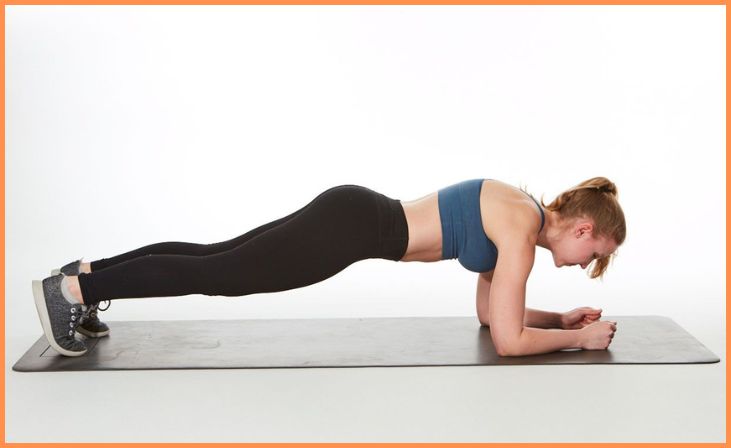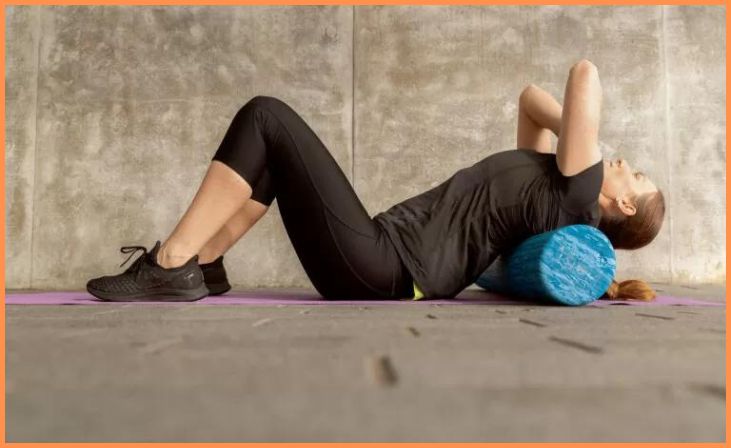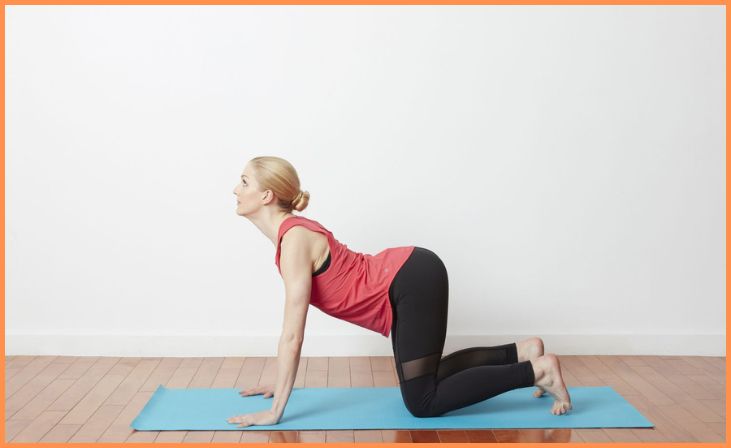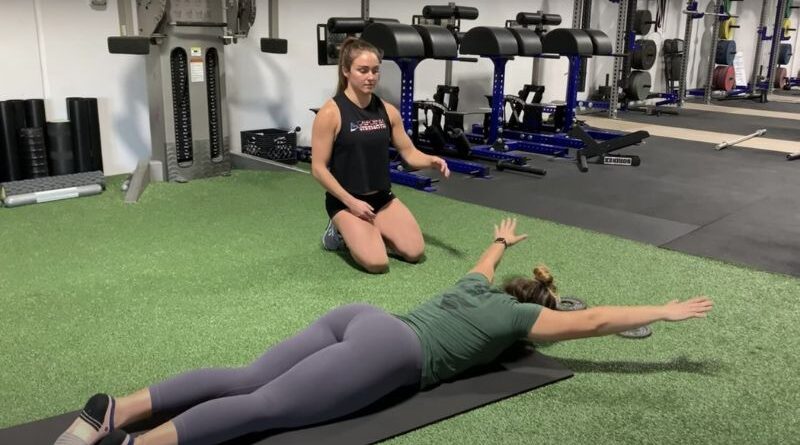Exercises to Improve Your Posture – In our modern, sedentary lifestyles, maintaining good posture is often overlooked, leading to various health issues. Poor posture can contribute to back pain, muscle tension, and even impact overall well-being. This set of exercises is designed to help you improve and maintain a healthier posture. By incorporating targeted stretches, strengthening routines, and simple awareness exercises into your daily routine, you can gradually enhance your posture and reduce the negative effects of prolonged sitting or poor habits. The benefits extend beyond physical appearance, encompassing improved breathing, increased energy levels, and a boost in overall confidence. Let’s embark on a journey to cultivate better posture habits, enhancing not only your physical health but also your overall quality of life.
Importance of good posture
Good posture is fundamental to overall health and well-being, influencing various aspects of our physical and mental state. Here’s why maintaining proper posture is crucial:
- Spinal Alignment: Good posture ensures that the spine is correctly aligned, reducing the risk of strain on the muscles, ligaments, and joints. Proper spinal alignment supports optimal functioning of the nervous system.
- Muscle Efficiency: Maintaining the correct posture distributes body weight evenly across muscles and joints. This helps prevent muscle imbalances and overuse, reducing the likelihood of chronic pain and discomfort.
- Improved Breathing: Proper posture opens up the chest and allows the lungs to expand fully. This enhances respiratory function, promoting better oxygen intake and circulation, which is vital for overall health and energy levels.
- Prevention of Joint Issues: Good posture minimizes stress on joints, decreasing the risk of arthritis, degenerative joint diseases, and related discomfort.
- Enhanced Digestion: Sitting or standing with good posture facilitates proper organ alignment, aiding digestion. Slouching or poor posture may compress organs and disrupt digestive processes.
- Positive Mental Outlook: There is a connection between posture and mood. Maintaining an upright posture can contribute to a more positive mental state, increased self-confidence, and reduced feelings of stress and anxiety.
- Prevention of Back Pain: Poor posture is a common cause of back pain. By aligning the spine correctly, good posture can alleviate or prevent various forms of back discomfort, enhancing overall spinal health.
- Increased Energy and Focus: Proper alignment of the body supports efficient energy flow and circulation. This can result in improved focus, concentration, and overall mental alertness.
Also, Read – 7 Exercise Tools for Your fitness Journey
Exercises to Improve Your Posture
Plank

Start in a push-up position, arms straight. Maintain a straight line from head to heels, engaging core muscles. Hold for 20-30 seconds, gradually increasing over time. Planks strengthen core, shoulders, and back, promoting better posture. Ensure hips aren’t sagging or raised too high. Perform 2-3 sets, integrating into your routine. Efficient and versatile, planks improve overall stability and contribute to a stronger, more aligned posture.
Bridge

Lie on your back with knees bent, feet flat. Lift hips towards the ceiling, forming a straight line from shoulders to knees. Squeeze glutes and hold for 20-30 seconds. Lower hips and repeat. Bridges target lower back, glutes, and core, enhancing spinal alignment. Incorporate into your routine with 2-3 sets. This exercise strengthens the posterior chain, addressing common posture issues caused by weak lower back and glute muscles. Ensure proper form by avoiding overextension. As you progress, challenge yourself by holding the bridge for a longer duration. Include bridges in a comprehensive routine for a well-rounded approach to improved posture.
Thoracic Extension Stretch

Sit or stand with a straight back. Interlace fingers behind your head. Gently arch your upper back, lifting your chest toward the ceiling. Hold for 15-20 seconds, feeling a stretch in your upper back. Repeat to improve thoracic mobility and counteract slouching. This stretch targets the thoracic spine, crucial for maintaining good posture. Incorporate into your daily routine or as a warm-up before exercise. Avoid excessive arching to prevent strain. Feel the stretch between your shoulder blades and upper back. Regular practice helps alleviate tension and contributes to an upright, balanced posture over time.
Cat-Cow Stretch

Start on hands and knees in a tabletop position. Inhale, arch your back, and lift your head (Cow position). Exhale, round your back, and tuck your chin to your chest (Cat position). Repeat for 10-15 reps. The Cat-Cow stretch enhances spinal flexibility and reduces stiffness. This dynamic exercise engages the entire spine, from neck to lower back. Focus on fluid movement, syncing breath with motion. Inhale during the arching phase, opening the chest and tilting the pelvis up. Exhale as you round the back, drawing the belly button towards the spine. Incorporate into your warm-up routine or as a quick posture reset during the day.
Also, Read – 10 Best Strength Exercises To Look & Feel Younger For Both Men & Women
Wall Angels

Stand with your back against a wall and feet a few inches away. Raise arms, keeping elbows and wrists against the wall. Perform a snow angel motion, moving arms up and down. Repeat for 10-15 reps. Wall Angels target the shoulders, upper back, and scapular muscles, promoting better posture. Ensure continuous contact with the wall to maintain proper form. This exercise improves shoulder mobility and strengthens postural muscles. Keep the core engaged and spine against the wall throughout. Wall Angels are a convenient and effective way to counteract the effects of prolonged sitting and forward head posture. Integrate them into your routine for a posture boost.
Chin Tucks

Sit or stand with a straight back. Gently tuck your chin towards your chest, keeping the neck long. Hold for 5 seconds and repeat for 10-15 reps. Chin tucks help alleviate neck and upper back tension, enhancing overall posture. This simple exercise engages the muscles at the back of the neck, counteracting the forward head position often associated with poor posture. Perform regularly to strengthen the neck muscles and promote a more aligned head position. Focus on controlled movements and avoid excessive tilting or straining. Incorporate chin tucks into your daily routine or as a quick break during prolonged periods of screen time.
Seated Row

Sit on the floor with legs extended. Loop a resistance band around feet, holding ends with both hands. Sit tall, pull the band towards your chest, squeezing shoulder blades together. Release slowly and repeat for 12-15 reps. Seated Rows target the upper back, shoulders, and arms, aiding in posture improvement. Ensure proper band tension for resistance. This exercise engages the muscles responsible for scapular retraction, essential for a strong and well-aligned posture. Maintain an upright spine throughout to maximize the benefits. Seated Rows are adaptable for various fitness levels, and incorporating them into your routine contributes to a balanced and well-supported upper body posture.
Conclusion
In conclusion, prioritizing good posture is a holistic investment in your physical and mental well-being. Beyond the aesthetic benefits, maintaining proper alignment contributes to spinal health, reduces the risk of chronic pain, and enhances overall vitality. By incorporating the outlined exercises, awareness practices, and ergonomic adjustments into your daily routine, you embark on a journey toward improved posture and a healthier, more resilient body. Cultivating these habits is not merely about appearance but serves as a foundation for a more energetic, confident, and pain-free lifestyle, positively impacting your long-term health and quality of life.
FAQs
Good posture is crucial for overall health, as it promotes proper spinal alignment, reduces the risk of musculoskeletal issues, enhances breathing and digestion, and contributes to a positive mental outlook.
Aim for at least 15-30 minutes of posture exercises daily. Consistency is key, but listen to your body and adjust intensity as needed.
Yes, many exercises focus on strengthening core and back muscles, which can alleviate and prevent back pain associated with poor posture.







